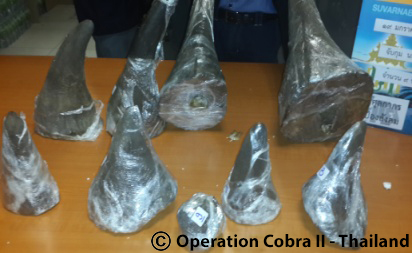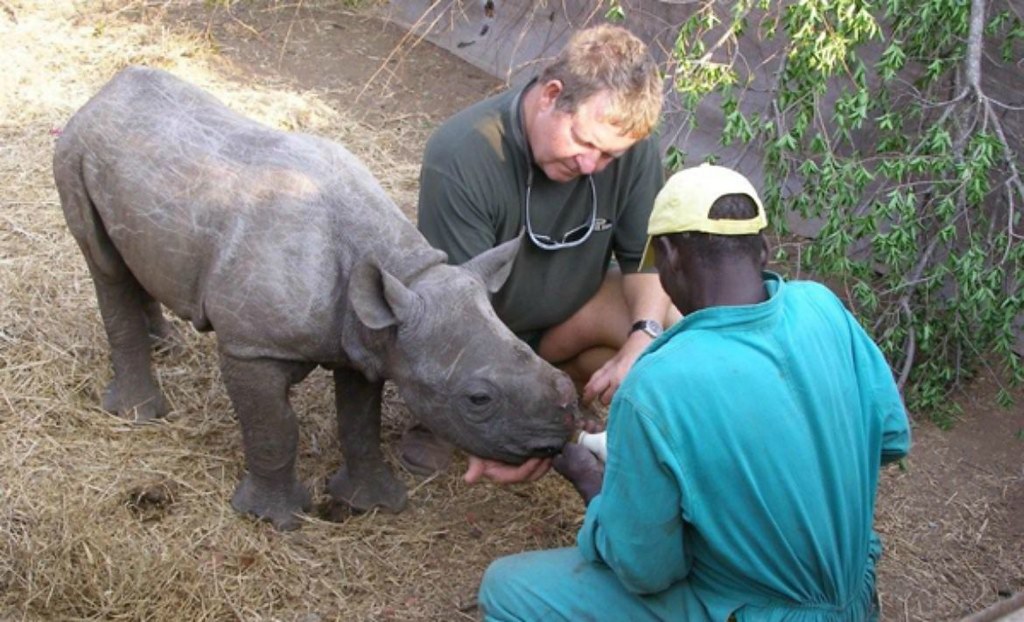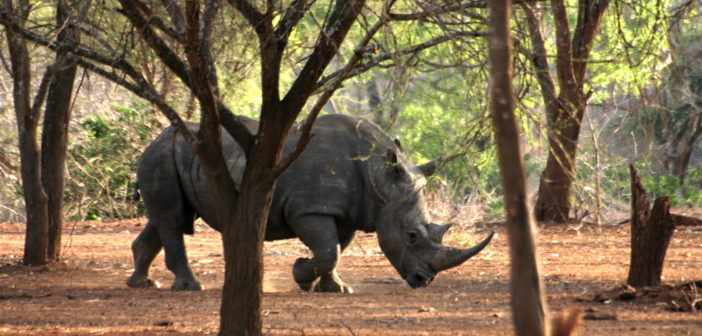This story is a work of fiction. Any resemblance to actual people or events is purely coincidental.
Jack Garcia made a series of video recordings on environmental issues to be temporarily archived in secret by two of his friends, who were senior technicians at the BBC. They were aired two months later while Jack and his team were foiling the plans of rhino poachers in Zimbabwe and Namibia. The recordings were intentionally made to look “rough” and spontaneous, apparently aired live from Jack’s home in Los Angeles. If Jack was doing live interviews in LA, no one would suspect that he was using dart guns to disable poachers’ Jeeps in Zimbabwe.
Such was Jack’s scheme, meticulously laid out to avoid being trailed by journalists who sought to present sensational and superficial “breaking news” about the latest projects of the famous activist and writer. Even more urgent was the need to insure that the angry poacher-gangsters could not identify the leader of the team that shut down their lucrative business. Television tracks would show Jack was in LA, not Africa.
The centerpiece of the plan was the faux rhino built in Cape Town, Republic of South Africa. The faux was the product of Jack’s detailed request and the creative genius of Jim Franklin, owner of the business Technology for Good in Cape Town. As Jim put it, “The beauty of the faux rhino is that it is the spitting image of a real rhino.”
At first, Jim had been unsure how to proceed. When Jack asked for a rhino, Jim replied, “You mean a robot you program or run with a remote?”
Jack said, “No, actually, I want to operate it from inside, inside the body.” Jim’s ears began to perk. Jack continued, “It’ll be a kind of vehicle… and I got a taxidermist friend to make it look realer than the real ones.”

The full size faux rhino was made of bullet proof metals, plastic, and cloth. Running on an electric motor that propelled the hulk up to 55 kilometers per hour, the faux was big enough for Jack to nestle inside, operate the motor, and fire dart guns and tranquilizer bullets from the mouth and rear end. Franklin wisely produced six faux rhinos to start Jack’s project and supply the police with trickster weapons, which would be even more effective than the poachers’ conventional arms. Jack knew the police would have to take over his project going forward. Some faux rhinos might have to be sent back to Jim for overhaul, and some traps set for the poachers would involve several faux rhinos.
For his team, Jack chose three Australian activists with whom he had worked before. This crew operated a super off-road truck strong enough to transport the faux, a generator, a heavy duty ramp, and supplies for two weeks in the bush. Using his theater background, Jack spoke with a strong Aussie accent through a bushy blond mustache, and his black hair was dyed sandy blond. The gang of four were dressed in the khakis of Australian tour guides, with short pants and short sleeves.
Following his signature strategy, Jack set out to trick the tricksters and undermine the underground methods of the poachers. Poachers often posed as police, lettering the sides of their vehicles to deceive anyone who might be curious or who might try to protect the animals. The faux rhino housed a hidden person, posing as a real rhino, deceiving the poachers who posed as police.
“Faux-One,” operated by Jack, was unloaded in an area often frequented by rhinos. The next day, when the poachers spotted Faux-One, they thought it was real and fired two tranquilizer bullets, which hit their target. Faux-One moved slowly into the bush and the poachers moved closer, expecting it to collapse. Jack fired multiple darts, hitting the front tires of the poachers’ Jeep, causing it to veer to the left. In confusion, the driver accelerated and turned sharply to the right, crashing into a tree at full speed. The Jeep was then inoperable. One poacher continued the chase on foot, but was slowed and then stopped by a round of tranquilizer bullets, shot from Faux-One’s anus.

Jack contacted the Zimbabwe police commissioner, whom everyone called just, Dakarai.
Jack said, “Me and my crew were able to disable one of the poacher Jeeps yesterday. Can we combine efforts with you and maybe set up a trap so you can arrest some poachers?” Dakarai relished the opportunity, and a plan was made for a spot in the bush that Dakarai thought would allow his deputies to close in on the poachers.
The following day, the police prepared to encircle the poachers who were drawn to the area where they spotted Faux-One and Faux-Two, believing they were real rhinos. Confused by their previous encounter with Faux-One and angered by their failures, the poachers began to use their AK-47 automatic weapons. Multiple police vehicles then closed in, and the officers arrested the poachers for possession of illegal weapons and poaching of protected animals.
This episode was filmed by photographers hired by Jack as part of the quintessential element of his mission: education. The narration for the film explains the inhumane activities of the poacher-gangsters. Along with the action footage, the narration explains that the poachers usually tranquilize the rhinos and saw off the horn, which causes bleeding. The poachers then sell the horn at exorbitant prices to black marketeers, who in turn sell it to marketeers in China and Viet Nam. The totally fanciful and false belief is that ground rhino horn is a powerful aphrodisiac and that its consumption cures many diseases, including diabetes and cancer. To serve these myths, rhinos are tranquilized, de-horned, and left to slowly bleed to death.

Image credit: Operation Cobra II, CC BY-SA 2.0.
Jack’s method of education is a global blanketing that takes account of the many peoples who do not have access to computers or television. From Google and Wikipedia to the one-page newspapers in tiny villages, the story of the rhinos and faux rhinos was told as part of the obligation to protect our animals and our planet. Jack told his team, “We are not Lone Rangers. Corny but true: we need everyone to saddle up.” The division of info-labor was organized through environmental and animal rights groups focused by country. The Natural Resources Defense Council (NRDC) took responsibility for the United States, posting and publishing on all levels, including videos and radio.
Jim Franklin was responsible for all of Africa, saying, “All camels will carry a bag of flyers describing the exploits of faux rhino and its pilot ‘faux man.'” Jack focused on international organizations like the World Wildlife Fund (WWF). The fund’s primary and secondary public education curricula department expanded the rhino section to include new pictures, videos and articles on the danger of extinction. Environmental and animal rights groups issued invitations to their members and others to consider employment or volunteer work. Dakarai stressed that we need “many eyes” in the bush, and a few carefully selected activists were honored to train as faux rhino pilots.

Leaving the on-the-ground rhino protection mission to Dakarai, his deputies, and their assistants, Jack returned to LA. A few poacher-gangsters continued to search for the “sandy-haired faux man” in Australia. Jack’s Australian crew had left envelopes in Africa with Australian addresses for “faux man.” These were part of an elaborate runaround plan. The poachers were informed at each residence that the faux man had moved to another address.
The poachers were not alone in remarking on the faux man mystery. Jim Franklin and Dakarai reported that he was not in Africa. The Australian crew said he had disappeared from down under. Journalists in Europe and America searched without success for the Australian activist with a bushy mustache.
The last report concerning faux man’s whereabouts came from a Cape Town woman. Through the grapevine running from Zimbabwe to the Cape, she had heard about the brave Aussie who, so it was said, had remained in South Africa after the smoke cleared. The day after hearing about him, she claimed that he appeared in the laundromat she owns. She said they had a moment when he helped her fold clothes, and eventually they became lovers. She told reporters that he often hangs out with the Roma on the Cape of Good Hope. Local sources suggested that the impressionable woman was fixated on the image of the sandy blond park ranger who is “strong like rhino.”
Featured image: a rhinoceros in the Malilangwe Game Preserve in Zimbabwe. Image credit Carrie Cizauskas, CC BY-SA 2.0.





